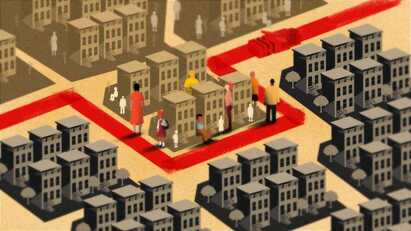 Across America, access to reliable, affordable broadband service may come down to where you live. This practice has been called "digital redlining" - where newer, more affluent neighborhoods are the first to receive upgraded broadband networks while older, less affluent neighborhoods are made to wait. A new FCC task force is being appointed to take a look at broadband equity, including preventing deployment discrimination based on income, race or other factors. Today there are no laws or rules that prevent redlining, leaving it up to the individual provider to decide who or who not to serve. The term redlining was coined to describe a common practice in urban areas during the 1930's and beyond where persons of color had trouble obtaining a mortgage for homes in white areas and were essentially assigned to live in more traditionally minority communities. Big providers, when deciding where to invest the money to upgrade their networks, often focus on wealthier parts of cities and shun low-income communities. Fiber connections are expensive, and ISPs are hesitant to expand unless they expect a return on their investment. As a result, poorer communities often have no internet or are stuck with slow, legacy networks that can't meet today's demands -- even though they usually pay as much as their wealthier neighbors who have gigabit fiber connections - "The broadband gap's dirty secret: Redlining still exists in digital form", CNET, June 2021 It's not just poorer communities that are seeing this sort of digital redlining. Any older, more established neighborhood is seen as less attractive for providers to overbuild or rebuild with fiber for many reasons. Crowded rights of way, trees, landscaping, fencing, and other characteristics of more established neighborhoods make them more expensive to serve, especially in communities where electric utilities have moved their lines underground. By contast, building fiber to a new development is relatively easy. Plus, providers find its actually less expensive to build out fiber in newer neighborhoods than copper-based technology. As communities are exploring ways to bring better broadband, especially fiber networks, to their citizens, they should try to ensure that the benefits come to all neighborhoods.
0 Comments
Leave a Reply. |
Broadband Bytes NewsPresented by the Community Broadband Action Network and curated by Curtis Dean. Archives
July 2024
Categories
All
|




 RSS Feed
RSS Feed
